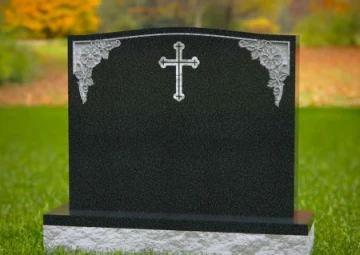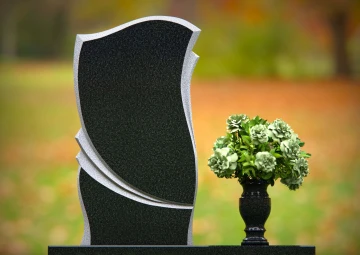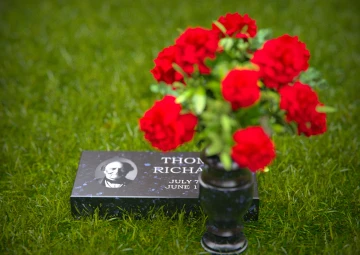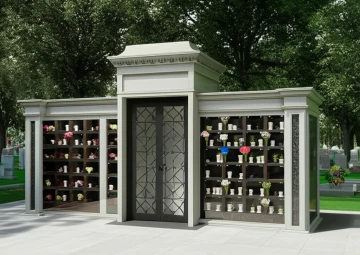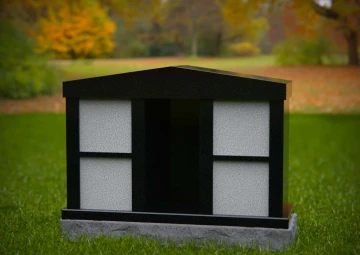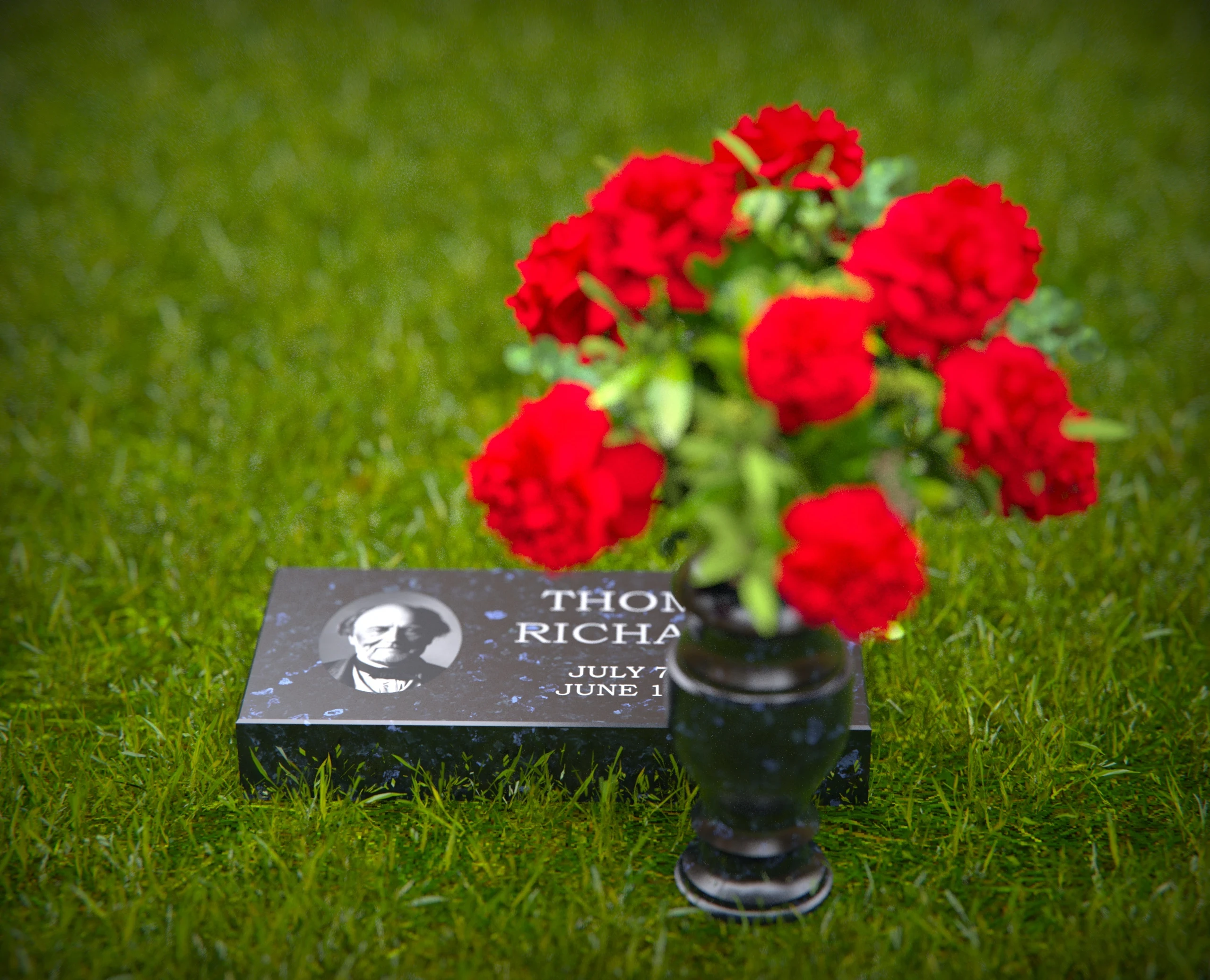
The way we choose to remember our loved ones is a deeply personal journey. Among the many decisions involved in memorializing an individual, selecting a monument is paramount. These markers, often referred to broadly as headstones, grave stones, or tombstones, serve as a lasting tribute and a focal point for remembrance. For a foundational understanding of these terms, our previous article,
This comprehensive guide will delve into the world of flat headstones, exploring their characteristics, benefits, considerations, material options, and personalization possibilities. Whether you are pre-planning your own memorial or choosing one for a loved one, understanding the nuances of flat markers and flat headstone markers will help you make an informed and heartfelt decision.
Defining Flat Memorials: What Are Flat Headstones, Flat Markers, and Flat Graves?
At its core, a flat headstone is a memorial that lies flush with the ground or is set only slightly raised. Unlike upright headstones that stand vertically, flat markers offer a more horizontal and integrated appearance within the cemetery landscape. The terms can sometimes be used interchangeably:
- Flat Headstones: This is a common term referring to these ground-level memorials.
- Flat Markers: Often used synonymously with flat headstones, this term emphasizes their function as a designator of the burial site. You might also hear "grass-level markers" or "flush markers." Many opt for flat grave markers due to their subtle appearance.
- Flat Graves: This term typically refers to the burial plot itself when it is intended to be marked with a flat marker, often dictated by cemetery regulations aimed at creating a uniform, park-like setting and simplifying grounds maintenance.
These grave stones are usually rectangular, though other shapes are possible. Their dimensions can vary, but common sizes for single graves are around 24 inches long by 12 inches wide, with a thickness of 3 to 4 inches. Companion flat markers, designed for two individuals, are proportionally larger. The defining characteristic of these flat grave markers is their minimal vertical profile, creating a seamless look with the surrounding lawn.
The Enduring Appeal: Advantages of Choosing Flat Headstones
The preference for flat headstones stems from a variety of practical and aesthetic reasons:
- Cemetery Regulations: Many modern cemeteries, and specific sections within older ones, mandate the use of flat markers. This is often to maintain a uniform, open, and park-like aesthetic, and to facilitate easier landscaping and maintenance, such as mowing. If you are considering a plot in such a cemetery, a flat headstone will be your primary, if not only, option. Understanding these regulations is key when selecting any flat headstone.
- Understated Elegance and Simplicity: For those who prefer a minimalist and unobtrusive tribute, flat headstones offer a dignified and subtle way to mark a resting place. Their simplicity can be seen as a form of modern elegance, focusing on the essential information and perhaps a few carefully chosen design elements without overwhelming the natural surroundings.
- Perceived Ease of Maintenance (for the cemetery): From a cemetery management perspective, flat graves with flat markers are generally easier and quicker to maintain with large-scale mowing equipment. This can contribute to the overall neatness of the cemetery grounds.
- Cost-Effectiveness (Sometimes): In some instances, flat headstones can be more affordable than their upright counterparts. This is because they typically require less material and potentially less complex installation. However, the cost is still highly dependent on material, size, and customization.
- Durability Against Elements: Being ground-level, flat markers are less exposed to direct wind and harsh weather conditions that can sometimes cause upright headstones to lean or suffer surface erosion more quickly if not properly set or made of less durable material.
- Safety: In some environments, flat markers can be seen as safer, with no risk of tall, heavy stones tipping over, although this is a rare concern with professionally installed modern headstones.
Important Considerations: Potential Downsides of Flat Markers
While flat headstones offer many benefits, there are also some factors to consider:
- Visibility: Being flush with the ground, flat markers can sometimes be harder to locate, especially in larger cemeteries or when covered by grass clippings, leaves, snow, or overgrowth if not regularly maintained. Visitors may need more precise directions to find a specific flat grave.
- Susceptibility to Debris and Waterlogging: Their ground-level position means flat headstones can be more easily covered by dirt, mud, grass clippings, and fallen leaves. They may also be more prone to temporary waterlogging after heavy rain, which can obscure the inscription until it dries.
- Perceived Lack of Grandeur: For families seeking a more prominent or imposing memorial, a flat marker might seem too modest. The limited surface area compared to some upright tombstones also means less space for elaborate designs or lengthy epitaphs, though skilled artisans can still create beautiful and meaningful engravings on flat headstone markers.
- Maintenance for the Family: While cemetery maintenance might be easier, families might find they need to clean the surface of a flat headstone more frequently to keep it clear of debris and legible. Grass may also try to grow over the edges.
- Risk of Damage from Mowers: Although designed to be mown over, there's a slight risk of flat markers (especially thinner ones or those not set perfectly) being scuffed or chipped by heavy lawnmowers or other maintenance equipment over time.
A Foundation of Remembrance: Material Choices for Flat Headstones
The material chosen for a flat headstone significantly impacts its durability, appearance, and cost. The two most common and highly recommended materials are granite and bronze:
-
Granite: This is by far the most popular choice for all types of headstones, including flat markers and flat headstones for graves.
- Durability: Granite is an igneous rock known for its exceptional hardness and resistance to weathering, staining, and fading. It can withstand harsh environmental conditions for centuries.
- Variety: It comes in a wide array of colors, from classic grays and blacks to vibrant reds, blues, pinks, and greens. The grain pattern of each piece is unique.
- Customization: Granite can be easily polished to a high shine or given other finishes. It lendself well to various engraving and etching techniques for lettering and designs.
- Maintenance: Relatively low maintenance, usually requiring only periodic cleaning.
-
Bronze: Bronze flat markers are also a traditional and durable option, often preferred for their classic, distinguished appearance.
- Appearance: Bronze develops a natural patina over time, which many find aesthetically pleasing. It offers a different visual texture compared to stone.
- Durability: Highly resistant to deterioration, though the surface can oxidize.
- Design: Bronze markers are typically cast, allowing for raised lettering and emblems. They are often attached to a granite or concrete base for stability and to meet cemetery requirements for flat graves.
- Considerations: Bronze can sometimes be more expensive than granite, and some cemeteries may have specific sections or rules regarding their use.
While other materials like marble exist, they are generally less durable than granite for ground-level grave stones and more susceptible to weathering and staining, making them less common for flat headstones today.
Personalizing a Subtle Tribute: Design Options for Flat Grave Markers
Despite their simpler form, flat headstones offer numerous opportunities for personalization, creating a unique and meaningful tribute:
- Inscriptions: This is the most crucial element. It typically includes the name, dates of birth and death. Epitaphs, short poems, scriptures, or meaningful quotes can also be added, space permitting. Font style and size can be chosen to reflect the individual's personality.
- Symbols and Emblems: Religious symbols (crosses, Stars of David, crescents), military insignia, emblems of hobbies or professions (musical notes, tools, sports equipment), or nature motifs (flowers, birds, trees) can be engraved on your flat headstone.
- Laser Etching and Engraved Imagery (Primarily on Granite): High-quality black granite flat markers can accommodate detailed laser-etched photographs or scenes. Traditional carved designs are also possible.
- Borders and Finishes: Simple line borders, floral patterns, or other subtle decorative elements can frame the inscription. The surface finish of granite (e.g., polished, stippled) also adds to the design.
- Single vs. Companion Markers: Flat headstones can be designed for an individual or as companion markers for two people, with shared design elements and inscriptions.
- Ceramic Photos: Small, durable ceramic photos can sometimes be inset into granite flat markers, offering a lasting visual remembrance.
When designing a flat headstone, it's essential to work with a reputable monument provider who can guide you through the options and ensure the design complies with any cemetery regulations for flat graves and flat headstone markers.
Ensuring Lasting Legibility: Maintenance and Care for Flat Graves
Maintaining the appearance and legibility of flat headstones is important. While generally robust, some care can enhance their longevity:
- Regular Cleaning: Periodically clean the surface with plain water and a soft brush to remove dirt, leaves, grass clippings, and bird droppings. Avoid harsh chemicals or abrasive tools (like wire brushes) that could damage the stone or bronze. For tougher stains on granite, specialized stone cleaners can be used, but always test in an inconspicuous area first. Bronze markers may benefit from specific bronze cleaners and occasional waxing (with appropriate products) to preserve their finish.
- Trimming Grass Edges: Carefully trim any grass or weeds that may grow over the edges of the flat marker to keep the inscription visible.
- Addressing Stains Promptly: Treat any spills or stains (like rust from metallic objects left on the stone) as soon as possible.
- Professional Help: For significant staining, damage, or if the flat headstone becomes uneven, consult a professional monument cleaner or restorer.
Many cemeteries include basic upkeep of flat graves as part of their service, but family members often take a personal role in ensuring the tombstones of their loved ones are well-tended.
Are Flat Headstones the Right Choice for Your Loved One?
Choosing between a flat headstone and an upright monument is a significant decision. Consider the following:
- Cemetery Regulations: This is often the deciding factor. Always confirm the rules of the specific cemetery and section.
- Personal Preference: Reflect on the personality and wishes of the deceased (if known) and the preferences of the family. Would they appreciate the simplicity of a flat marker or prefer a more prominent memorial?
- Aesthetic Desires: Do you envision a landscape of uniform, ground-level memorials, or do you prefer the varied heights and styles of upright headstones?
- Budget: While not always cheaper, explore the cost differences for the materials and designs you are considering.
- Long-Term Maintenance: Consider who will be responsible for visiting and maintaining the grave stone and how the type of marker might impact this.
There is no right or wrong answer; the best headstone is one that respectfully honors the individual and provides comfort to those who remember them. Flat headstones, with their quiet dignity, are a beautiful and fitting choice for many.
Conclusion
Flat headstones, flat markers, and the concept of flat graves offer a unique blend of simplicity, elegance, and practicality in memorialization. As with any grave stone or tombstone, they stand as enduring symbols of lives lived and cherished memories. By understanding their characteristics, advantages, and the considerations involved, you can confidently choose a flat headstone that serves as a beautiful and lasting tribute, ensuring that remembrance is honored with grace and dignity for generations to come.



